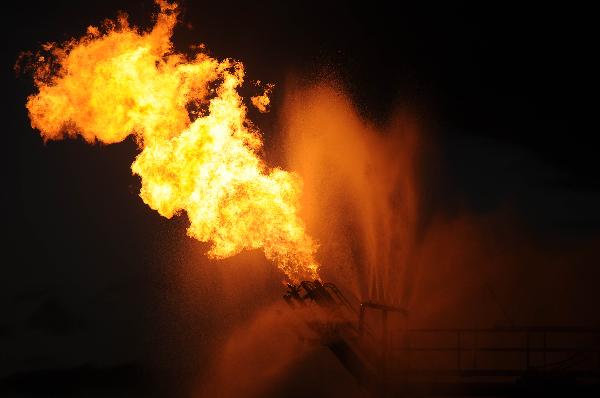Tube siphons 2,000 barrels of oil a day
British energy giant BP said Tuesday a tube siphoning oil from a ruptured undersea well in the Gulf of Mexico is now drawing 2,000 barrels of crude a day, almost double the amount when it started operation Sunday.
|
|
|
Boats are seen clearing up the leaked oil, which was caused by an explosion of a BP oil rig in the Gulf of Mexico, on May 5, 2010. [Xinhua] |
BP crews inserted the 4-inch tube into a 21-inch riser pipe that once connected the rig with a underwater well Sunday, after earlier failed attempts with a mile-long tube.
In a news release issued Monday, BP, operator of the rig which exploded and sank off the Louisiana coast late last month, said its other containment options also continue to be progressed.
Plans continue to be developed for a so called "top kill" operation where heavy drilling fluids are injected into the well to stem the flow of oil and gas, followed by cement to seal the well, BP said.
Options have also been developed to potentially combine "top kill" with so-called "junk shot," the injection under pressure of a variety of materials to seal off upward flow.
As work on the first relief well, which began on May 2, continues, BP said it began drilling the second relief well on May 16. Each of the wells is estimated to take some three months to complete.
The "Deepwater Horizon" drilling rig, leased by BP, exploded and sank some 52 km off Venice, Louisiana, late last month. The untapped undersea wellhead continues gushing oil into the Gulf of Mexico.
BP has put the leak at 5,000 barrels a day, but scientists fear the amount of oil pouring into the Gulf of Mexico from the undersea gusher could be significantly more.
 |
|
Gas from the damaged Deepwater Horizon wellhead is burned by the drillship Discoverer Enterprise in the Gulf of Mexico May 16, 2010, in a process known as flaring. The crude spewing into the Gulf of Mexico are being sucked up to the surface via a tube that was placed inside the damaged oil pipe. [Xinhua] |
 0
0 



![Boats are seen clearing up the leaked oil, which was caused by an explosion of a BP oil rig in the Gulf of Mexico, on May 5, 2010. [Xinhua] Boats are seen clearing up the leaked oil, which was caused by an explosion of a BP oil rig in the Gulf of Mexico, on May 5, 2010. [Xinhua]](http://images.china.cn/attachement/jpg/site1007/20100519/000cf1bdd03f0d5d9ba413.jpg)




Go to Forum >>0 Comments